Showing Spotlights 97 - 104 of 240 in category All (newest first):
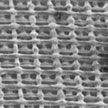 Carbon nanotube enabled nanocomposites have received much attention as a highly attractive alternative to conventional composite materials due to their mechanical, electrical, thermal, barrier and chemical properties such as electrical conductivity, increased tensile strength, improved heat deflection temperature, or flame retardancy. In new work, researchers report the fabrication of highly conductive carbon nanotube/polylactic acid nanocomposites used as 3D printable conductive inks for fabrication of conductive scaffold structures applicable as liquid sensors.
Carbon nanotube enabled nanocomposites have received much attention as a highly attractive alternative to conventional composite materials due to their mechanical, electrical, thermal, barrier and chemical properties such as electrical conductivity, increased tensile strength, improved heat deflection temperature, or flame retardancy. In new work, researchers report the fabrication of highly conductive carbon nanotube/polylactic acid nanocomposites used as 3D printable conductive inks for fabrication of conductive scaffold structures applicable as liquid sensors.
Oct 6th, 2016
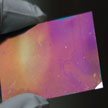 Point-of-care diagnostics, food safety screening, and environmental monitoring will massively benefit from the label-free, inexpensive, rapid, handheld sensor devices that are currently under development. To date, there has been a lot of work reported on either SERS or plasmonic sensing but very few have reported sensing with the same device for both SERS and plasmonics, let alone plasmonic colorimetry naked-eye sensing. For the first time ever, researchers have reported the combination of naked-eye plasmonic colorimetry and high-enhancement and high-uniformity SERS in one sensor.
Point-of-care diagnostics, food safety screening, and environmental monitoring will massively benefit from the label-free, inexpensive, rapid, handheld sensor devices that are currently under development. To date, there has been a lot of work reported on either SERS or plasmonic sensing but very few have reported sensing with the same device for both SERS and plasmonics, let alone plasmonic colorimetry naked-eye sensing. For the first time ever, researchers have reported the combination of naked-eye plasmonic colorimetry and high-enhancement and high-uniformity SERS in one sensor.
Aug 19th, 2016
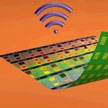 Researchers have developed a highly manufacturable integration strategy for making 3D flexible sensor arrays and connecting them to control electronics based on the widely popular phrase, 'Two sides of the same coin'. Sensor arrays and control elements for flexible electronics devices are usually placed on the same plane, unnecessary requiring additional area, and causing problems of heat dissipation. These challenges motivated researchers to come up with an area-efficient solution for the problem of connecting sensors and electronics together in such a way that electronics can be kept away from the sensed surface. This is the first time ever the concept of double sided flexible 3D electronics has been introduced in the flexible and wearable electronics industry.
Researchers have developed a highly manufacturable integration strategy for making 3D flexible sensor arrays and connecting them to control electronics based on the widely popular phrase, 'Two sides of the same coin'. Sensor arrays and control elements for flexible electronics devices are usually placed on the same plane, unnecessary requiring additional area, and causing problems of heat dissipation. These challenges motivated researchers to come up with an area-efficient solution for the problem of connecting sensors and electronics together in such a way that electronics can be kept away from the sensed surface. This is the first time ever the concept of double sided flexible 3D electronics has been introduced in the flexible and wearable electronics industry.
Jul 26th, 2016
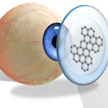 The latest example of a graphene-based wireless sensor that could make 24-hour healthcare easier to achieve by enabling wireless monitoring of various biomedical events in order to gain a more comprehensive assessment of the wearer's healthcare status. This novel device, which detects chemical/molecular agents and lengths of exposure, can be used as lightweight and transparent wearable or bio-implantable electronic sensor. It may provide an inexpensive way to detect in real-time the biomedical of interest.
The latest example of a graphene-based wireless sensor that could make 24-hour healthcare easier to achieve by enabling wireless monitoring of various biomedical events in order to gain a more comprehensive assessment of the wearer's healthcare status. This novel device, which detects chemical/molecular agents and lengths of exposure, can be used as lightweight and transparent wearable or bio-implantable electronic sensor. It may provide an inexpensive way to detect in real-time the biomedical of interest.
Jun 6th, 2016
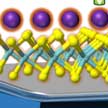 Nanomaterials like graphene and fullerenes provide an excellent platform to enhance weak signals from biomarkers. While graphene and fullerenes perform very well for detecting isolated biomarkers, their ability to amplify emission of biomarkers in a real physiological milieu is limited due to their strong interactions with other biomolecules such as proteins and lipids. A team of researchers now have developed new sensing platforms that use two-dimensional materials beyond graphene.
Nanomaterials like graphene and fullerenes provide an excellent platform to enhance weak signals from biomarkers. While graphene and fullerenes perform very well for detecting isolated biomarkers, their ability to amplify emission of biomarkers in a real physiological milieu is limited due to their strong interactions with other biomolecules such as proteins and lipids. A team of researchers now have developed new sensing platforms that use two-dimensional materials beyond graphene.
Apr 11th, 2016
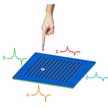 In order to make robots and robotic technology more human-like and more human-friendly, smart skin technology is a critical element that helps robots sense the world. These electronic or smart skins could help machines to accurately perceive the environment and better assist human owners. By applying the triboelectric effect and planar electrostatic induction, researchers for the first time have created a self-powered analogue smart skin.
In order to make robots and robotic technology more human-like and more human-friendly, smart skin technology is a critical element that helps robots sense the world. These electronic or smart skins could help machines to accurately perceive the environment and better assist human owners. By applying the triboelectric effect and planar electrostatic induction, researchers for the first time have created a self-powered analogue smart skin.
Apr 8th, 2016
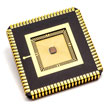 Our environment will slowly but surely evolve into an 'Internet of Things', where chips and sensors are integrated invisibly in the environment to assume their manifold tasks. Think of sensors that detect the presence of individuals and adapt the light in a building accordingly, resulting in serious energy savings. Those sensors will be, in a sense, the eyes, ears, and noses of our environment. At the recent ISSCC-conference, researchers have presented a number of remarkable developments. These may pave the way to a world where sensors assist us to drive more safely, live healthier, and make the planet more sustainable.
Our environment will slowly but surely evolve into an 'Internet of Things', where chips and sensors are integrated invisibly in the environment to assume their manifold tasks. Think of sensors that detect the presence of individuals and adapt the light in a building accordingly, resulting in serious energy savings. Those sensors will be, in a sense, the eyes, ears, and noses of our environment. At the recent ISSCC-conference, researchers have presented a number of remarkable developments. These may pave the way to a world where sensors assist us to drive more safely, live healthier, and make the planet more sustainable.
Mar 10th, 2016
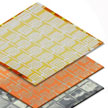 Researchers have explored common inexpensive materials to demonstrate their valuable and advantageous properties for artificial skin development. They demonstrate a scalable fabrication approach using off-the-shelf household items such as aluminum foil, scotch tapes, sticky-notes, napkins and sponges to build 'Paper Skin'. Paper Skin promises to be an affordable all-in-one flexibel sensing platform, applicable for applications such as health monitoring, 3D touchscreens, and human-machine interfaces, where sensing diversity, surface adaptability, and large-area mapping all are essential.
Researchers have explored common inexpensive materials to demonstrate their valuable and advantageous properties for artificial skin development. They demonstrate a scalable fabrication approach using off-the-shelf household items such as aluminum foil, scotch tapes, sticky-notes, napkins and sponges to build 'Paper Skin'. Paper Skin promises to be an affordable all-in-one flexibel sensing platform, applicable for applications such as health monitoring, 3D touchscreens, and human-machine interfaces, where sensing diversity, surface adaptability, and large-area mapping all are essential.
Feb 19th, 2016
 Carbon nanotube enabled nanocomposites have received much attention as a highly attractive alternative to conventional composite materials due to their mechanical, electrical, thermal, barrier and chemical properties such as electrical conductivity, increased tensile strength, improved heat deflection temperature, or flame retardancy. In new work, researchers report the fabrication of highly conductive carbon nanotube/polylactic acid nanocomposites used as 3D printable conductive inks for fabrication of conductive scaffold structures applicable as liquid sensors.
Carbon nanotube enabled nanocomposites have received much attention as a highly attractive alternative to conventional composite materials due to their mechanical, electrical, thermal, barrier and chemical properties such as electrical conductivity, increased tensile strength, improved heat deflection temperature, or flame retardancy. In new work, researchers report the fabrication of highly conductive carbon nanotube/polylactic acid nanocomposites used as 3D printable conductive inks for fabrication of conductive scaffold structures applicable as liquid sensors.

 Subscribe to our Nanotechnology Spotlight feed
Subscribe to our Nanotechnology Spotlight feed





